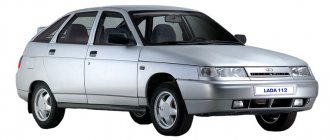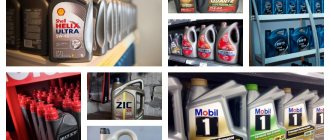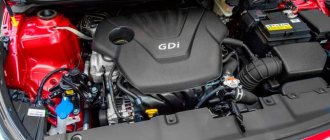What are the consequences of an incorrect transition?
Improper switching from one lubricant to another can cause such consequences.
- Coagulation of fluid inside the crankcase compartment.
- Formation of insoluble precipitate.
- Destruction of the protective properties of the new lubricant.
- Overheating of the power plant.
- Damage to seals and piston rings.
- Increased fuel consumption.
In order to prevent negative consequences during the transition, it is necessary to carefully remove the old formula by thoroughly flushing the highway system.
When is it necessary to change the oil type?
You have to switch from semi-synthetic oil to synthetic or vice versa for various reasons. For example, if you have been using your car for a long time and have a high mileage on the odometer, it is better to fill it with semi-synthetics instead of synthetics. Also, sometimes the oil previously poured into the engine disappears from sale. In the latter case, you may only have to change the brand of engine oil, and the type of lubricant itself will not change. We recommend reading the article about the types of motor oils.
Sometimes the question of switching to another oil arises among people who bought a used car. We do not recommend trusting the seller’s words regarding previously filled oil; it is better to simply fill in a new, guaranteed suitable oil, following the rules for switching from one fluid to another.
How to properly and with what to flush the engine
There are several ways to flush the engine before adding a new lubricant.
- Diesel fuel. A dangerous method based on pouring fuel into the crankcase. The essence of the method is to wash lines and components from old deposits and worn-out masks. If improperly flushed, the engine may be destroyed and important components may be damaged. Strictly not recommended without experience. Use on engines of modern foreign cars is prohibited.
- Special flushing liquid. A safer, more humane way. Liquid is poured into the crankcase compartment to wash away the old oil. Then a new lubricant is poured in.
The second method of flushing, before changing the brand of oil in the car, is safer. Therefore, further instructions will tell you exactly about it.
Changing the oil brand
When changing the brand of oil, you must remember that its quality class must be at least no worse than that previously used. This is especially true for modern engines, which place increased demands on the quality of the oil used. By using inexpensive oil in such a case, which is lower in class than that recommended by the car manufacturer, we significantly reduce the engine's service life, and soon we will need to solve problems with serious engine malfunctions that have appeared.
Also, a car owner who decides to change the brand or type of oil must remember that the internal flushing of the engine is mandatory. For this, both special auto chemicals and washing oil, which has a specialized package of additives, can be used. Carrying out such a wash allows you to wash out all contaminants from the engine, eliminating any future problems when operating the engine. Properly flushing the engine prevents a chemical reaction between old and new oil, which often leads to blockage of channels in the cylinder head or block.
How to change the oil correctly
The correct transition to another engine oil is carried out according to the instructions:
- A special container for processing is prepared.
- The machine warms up to operating temperature. This is done on the go - under load, heating occurs 3-4 times faster.
- Next, you need to drive the car onto a flat area, inspection hole, or lift.
- Open the filler neck.
- Remove the crankcase drain plug.
- Completely drain the used lubricant.
- Screw the plug into place and fill the oil container with flushing.
- Start the power plant and let it run for 3-5 minutes. The exact procedure time can be found on the canister label.
- Next you need to completely drain the crankcase.
- Pour in a fresh portion of lubricant and operate the machine in standard mode.
How to switch to another engine oil correctly
You can do the replacement yourself at home. But in order to do this correctly and efficiently, you should know several rules.
- It is better to drain the oil from an engine that is warmed up to operating condition. Hot oil becomes more fluid than cold oil and drains completely. In a cold engine, oil films and clots may remain on the surfaces of parts. It is more convenient to change the oil immediately after a trip. Warming up a cold engine while parked will take quite a long time and will lead to unnecessary fuel consumption, since at idle speed without load the internal combustion engine does not warm up as much as during a trip under work loads.
- To drain completely, the car must be parked on a level surface. Otherwise, due to the tilt, the oil may not drain completely.
- After draining, tighten the drain plug from the bottom of the crankcase and fill in the flushing fluid. The internal combustion engine starts and runs for exactly the time specified in the instructions for use of this fluid. In no case longer, since the flushing fluid does not provide regular lubrication, and prolonged operation of the internal combustion engine with it instead of oil can damage important components. In this case, it is better to “not wash” than to “overwash”.
Motor oil: what dealers are silent about
Let's debunk the most common myths about motor oils, many of which were invented by car companies and their dealers
Daria Uchevatova
Myth 1. Information about the type of oil that is poured into engines on a conveyor belt is almost impossible to find.
This is not entirely true. The type of oil used is always specified by the engine manufacturer in the service manual, but the brand is often not disclosed. The approach to informing customers about the origin of the original oil differs greatly from manufacturer to manufacturer. For the last four decades, Renault has openly recommended that all owners of their cars use ELF engine oils. VW Group does not advertise the oil manufacturer, but does not hide it either. For example, according to lubricant experts, VW Original LL-III 5w30 oil (504/507 approval), which is filled at VW factories in Europe and Russia, is Castrol EDGE Professional LL3 5W-30. This information can be considered reliable, since it was officially confirmed by the representative office of the German automaker. However, according to other information obtained from the same sources, it could be Fuchs TITAN EM 030 VW, as well as Pentosin or Shell. And finally, there are brands that carefully hide the origin of the oil - this includes, for example, Toyota. The recommendations received from this manufacturer boil down to the need to use the original oil and not think about where and by whom it was produced.
Myth 2. On for engine break-in
Many large brands, and with them dealers, simply inform customers that “synthetic” is poured into the engine on the assembly line. Many car enthusiasts do not believe this and believe that cheaper mineral oil with a package of break-in additives is poured into the engine on the assembly line. The arguments include the need to change the oil during the so-called “zero maintenance”, which is carried out shortly after purchasing a car - such recommendations, for example, are given by dealers of Lada, Datsun and Hyundai. The need to change the oil soon after the car leaves the factory gates forces customers to conclude that “conveyor” oil cannot be expensive and synthetic by definition. The reason for the controversy is that dealers are introducing “zero maintenance” into the regulations on their own initiative. For them, this is a way to earn extra money. Changing the oil soon after purchase does not contradict the manufacturer's recommendations, and dealers actively use this. Meanwhile, increasing the accuracy of production of engine parts has long led to the fact that modern engines, in fact, do not need running-in, so there is no point in using “break-in” oil with a special additive package.
Myth 3. Dealers don’t know what kind of oil is in their cars.
This is wrong. Dealers know this if only because after selling cars they are required to perform routine maintenance to maintain the factory warranty. In addition to the “original”, there is a whole list of recommended oils that can be poured into new cars of the corresponding make and model. The dealer has the right to change the supplier if this does not contradict his agreements with the manufacturer. The reason for the emergence of the myth, as often happens, was the notorious “human factor”. Often, specialists from the same dealership provide different information in response to requests. At the same time, after contacting the representative office, the client receives information that contradicts the dealer’s response. Most often, this is not malicious intent, but inconsistency in the external communication policies of dealership centers and representative offices. However, we should not forget that manufacturers may change official suppliers from time to time in order to reduce costs, and the name of the “original” motor oil may change depending on the year of manufacture of the car.
Myth 4. It is better to change the engine oil as often as possible
You can’t argue with this statement, especially if the machine operates in difficult conditions. But during normal operation of the car, excessive zeal in this case will only lead to additional costs, without in any way affecting the service life of the engine. As we have already figured out, the so-called “break-in oil” is a relic of the past. In the case of powerful cars, their engines are run-in on a stand under production conditions. This practice exists, for example, at the new Jaguar engine plant in Castle Bromwich. Engines of conventional cars do not require running-in. When assembled on a conveyor belt, they are filled with standard recommended motor oil (synthetic or semi-synthetic), and it must be changed according to the factory regulations, to TO-1. Most manufacturers recommend replacing after 15,000 or even 20,000 km or after 1 year of operation, whichever comes first. In the West, a service interval of 20,000 km has long become the norm, although in Russia some manufacturers (for example, Citroen, Peugeot and Toyota) have reduced it by half - to 10,000 km. In most cases, such reinsurance is not justified, but the owner of a new car cannot go against the will of the car company, since this is fraught with loss of warranty.
Myth 5. You cannot change the type of oil poured into the engine.
At different times, manufacturers have focused on different oil properties, depending on changing market requirements. In the early stages of technology development, the most important issue was maximum engine wear protection. Later the emphasis shifted to extending oil change intervals. When tightening environmental requirements became the main trend, manufacturers switched to solving this problem. Many auto companies, in pursuit of reducing fuel consumption parameters, have switched to energy-saving (friction-reducing) motor oils. This oil will not harm the engine, but if you do not want to overpay for new technologies, you can painlessly switch to a different type of oil. In this case, manufacturer tolerances play a key role. If the non-energy-saving oil you choose has the appropriate approval, you can safely use it.
Material prepared by a Valvoline expert
The editors recommend:
“Halogen” Osram Night Breaker 200: how to improve the headlights without disturbing anything.
How to return unpainted body plastic to black?
How to defeat corrosion? An effective way to remove rust yourself
News Media2
Discussion Cancel
2 comments
- Yuri:
04/21/2020 at 14:57
Nonsense No. 1: Toyota does not hide the manufacturer of oils, go to their website and see that the general partner of Toyota and Lexus is EXXON MOBIL. Nonsense No. 2: Dear Valvoline expert, read the documentation for any modern synthetics and you will see that its service life is 250 - 280 hours, at an average speed of 40 km/h, the mileage will be 10 thousand km. What 15-20 thousand? Nonsense No. 3: Modern engines do not need running-in. In general, no comments. Nonsense No. 4: If anyone is hiding oil suppliers, it is VAG, it is only clear that this is BP, and which of the oils (Castrol, Aral or BP) produced under this brand is carefully hidden. But this is definitely not Shell or Fuchs.
Answer
- Sergey:
04/08/2020 at 16:14
You can and should trust Valvoline!
Answer










